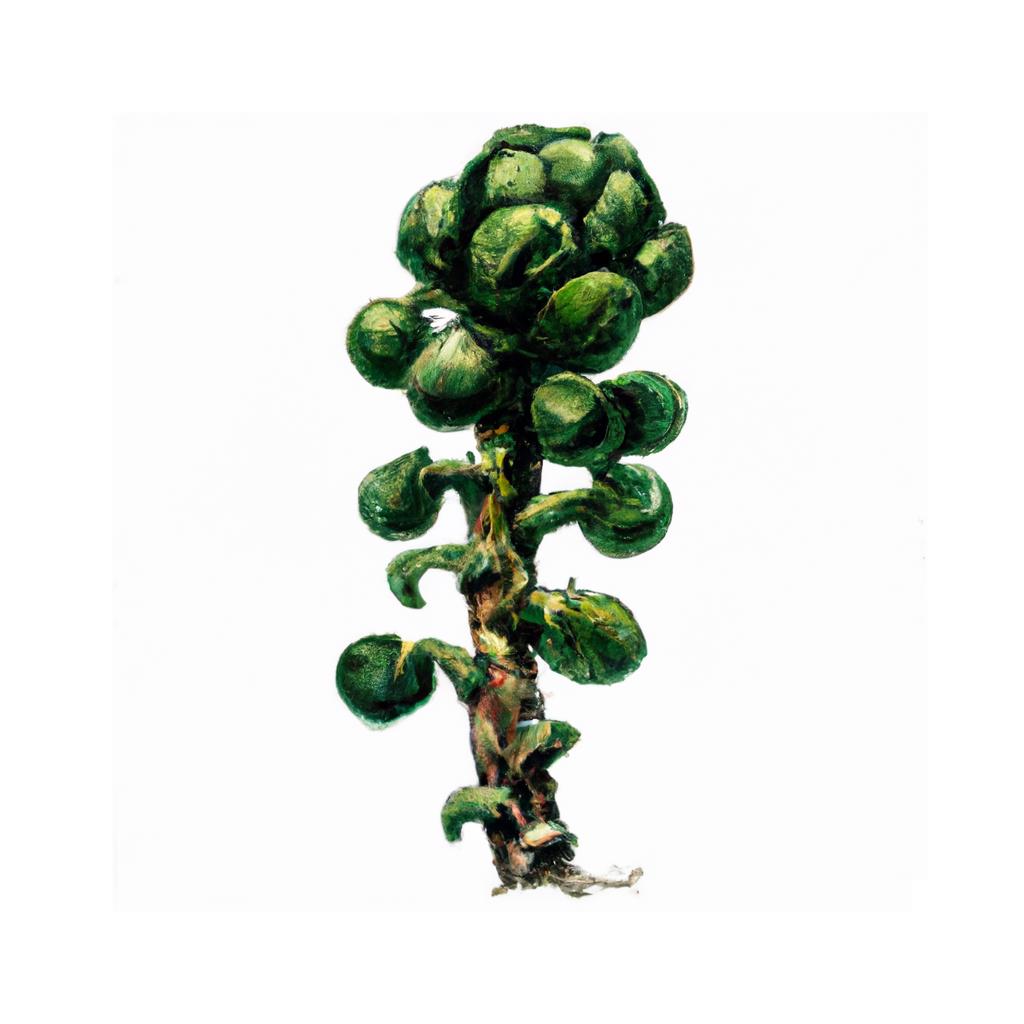
Brussels sprouts are small, leafy green vegetables that look like miniature cabbages and belong to the Brassica family. They grow on a stalk, with each sprout forming at the base of a leaf. Brussels sprouts are native to the Mediterranean region, but their name comes from the city of Brussels, Belgium, where they were widely cultivated in the 16th century.
These cruciferous vegetables are packed with nutrients, including vitamins C, K, and B6, as well as fiber, manganese, and potassium. Brussels sprouts are known for their potential health benefits, such as helping to lower cholesterol and protect against certain types of cancer due to their high content of antioxidants and glucosinolates.
When it comes to preparing Brussels sprouts, there are many ways to enjoy them. Roasting is a popular method, as it brings out their natural sweetness and caramelizes their outer layers. Other cooking methods include boiling, steaming, stir-frying or enjoying them raw in a salad. Brussels sprouts pair well with a variety of ingredients, such as bacon, nuts, balsamic vinegar, and garlic.
Brussels sprouts are a cool-season crop, typically planted in late summer and harvested during the fall and winter months. The ideal temperature for growing Brussels sprouts ranges between 45° and 75°F (7° and 24°C), and they often taste sweeter after frosty temperatures due to an increased sugar content.
This is advice is most applicable to growers in the UK, you may need to adjust the timings if you live somewhere with a different climate and/or seasons.
| Month | Tasks | Advice |
|---|---|---|
| January | Maintain soil moisture, Harvest sprouts if ready, | Make sure to remove any yellowing leaves from the sprout plants, and harvest the sprouts from the bottom of the plant upwards. |
| February | - | - |
| March | Start seeds indoors, | Sow seeds 1/4 inch deep in seed trays or pots with well-draining compost. Keep the temperature around 15°C for the best germination rates. |
| April | Transplant seedlings outdoors, | Plant out Brussels sprout seedlings 18-24 inches apart in rows 30-36 inches apart. The seedlings should have 4-5 true leaves at the time of planting. |
| May | Maintain soil moisture, Mulch around the plants, Begin staking if needed, | Water regularly during dry spells, apply a layer of mulch to conserve moisture, suppress weeds and provide extra nutrients. Stake taller varieties to prevent them from toppling over. |
| June | Maintain soil moisture, Add support as necessary, | Continue watering Brussels sprouts during dry periods and add extra support to prevent any top-heavy plants from falling over. |
| July | Maintain soil moisture, | Ensure Brussels sprouts receive enough water, especially during hot spells, to promote healthy growth and prevent the sprouts from becoming loose or bitter. |
| August | Maintain soil moisture, Start removing lower leaves, | Continue watering as needed, and gradually remove lower leaves of the plants to encourage better air circulation and larger sprout formation. |
| September | Maintain soil moisture, Remove more lower leaves if necessary, | Keep the soil evenly moist, and clear away remaining lower leaves to further boost sprout development. |
| October | Maintain soil moisture, Harvest sprouts when ready, | Check sprouts for size and firmness, and begin harvesting from the bottom of the plants upwards when they are about 1 inch in diameter. |
| November | Maintain soil moisture, Harvest sprouts if ready, | Continue harvesting sprouts as they mature until only the top few sprouts remain. |
| December | Harvest remaining sprouts, | Harvest any remaining sprouts on the plant, including the small ones at the top, as they may not grow much larger. |